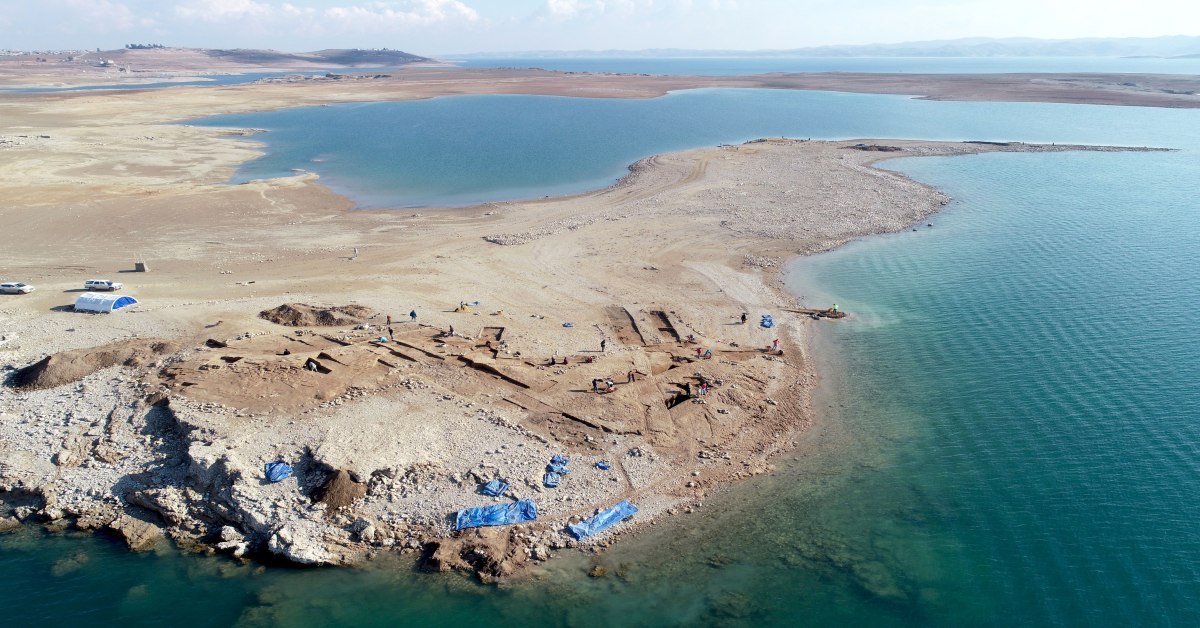As a consequence of drastic weather changes in Iraq, a 3400-year-old city has emerged from the Tigris River, leaving archaeologists astonished.

The country of Iraq has been affected particularly hard by extreme drought caused by climate change. In order the save the crops from drying out, officials have decided to draw large amounts of water from the country’s most important water storage, the Mosul reservoir. Interestingly, this has also led to the reappearance of an ancient Bronze Age city.
The unexpected discovery put archaeologists under immense pressure, as they had to put together a team for the excavations within only a few days. Furthermore, the team had to excavate and document the ancient ruins as quickly as possible, since it was unknown when the waters would rise again.

Despite the short notice excavations, the archaeologists were able to map most of the city, which is located at Kemune in the Kurdistan Region of Iraq. Besides a palace, which was identified during a short drought in 2018, the team of German and Kurdish archaeologists have uncovered a fortified building with large walls and towers, an industrial complex, and a huge multi-storey warehouse.
According to the scientists, the city that stood on the banks of the Tigris River between 1550 and 1350 BC was an important center of the Mittani Empire. The Mittani people were one of the great nations of the time, and they controlled large parts of Mesopotamia and Syria. They were the pioneers of the infamous war-chariot, which gave Mitanni a huge military superiority over its enemies. Also, during excavations in Turkey archaeologists found the oldest horse-training manual in the world, one that was written by a Mitanni horse trainer called Kikkuli in 1345 BC. Despite its military might, the Mitanni Empire was eventually overtaken by the Assyrian Empire, and this once great empire became largely forgotten. But with this new discovery, which has survived in a remarkable state, we are gaining valuable insight into the days of this ancient power.

How well the complex has survived surprised even the scientists. Although the buildings were made out of sun-dried mud bricks that had been submerged for more than 4 decades, most structures survived in very good condition. This is due to an earthquake that struck the area around 1350, causing the upper parts of the walls to collapse and bury the buildings.
The archaeologists have recovered several ceramic vessels from the ruins, along with more than 100 clay tablets with cuneiform inscriptions that date back to the period of the Middle Assyrian Empire (the period after the fall of the Mitanni Empire). The researchers hope that these findings will provide some information about who lived in the city, and the beginnings of Assyrian rule in the region.

The Mosul Dam has since been refilled, leaving the ruins of the city once again under water. But this time the researchers have done all they could to prevent any further damage to the site by covering the ruins with a tight-fitting plastic sheeting, and a gravel fill. Hopefully this will ensure that they can continue their work where they left off, once the water levels recede again.
Sources: 1, 2
